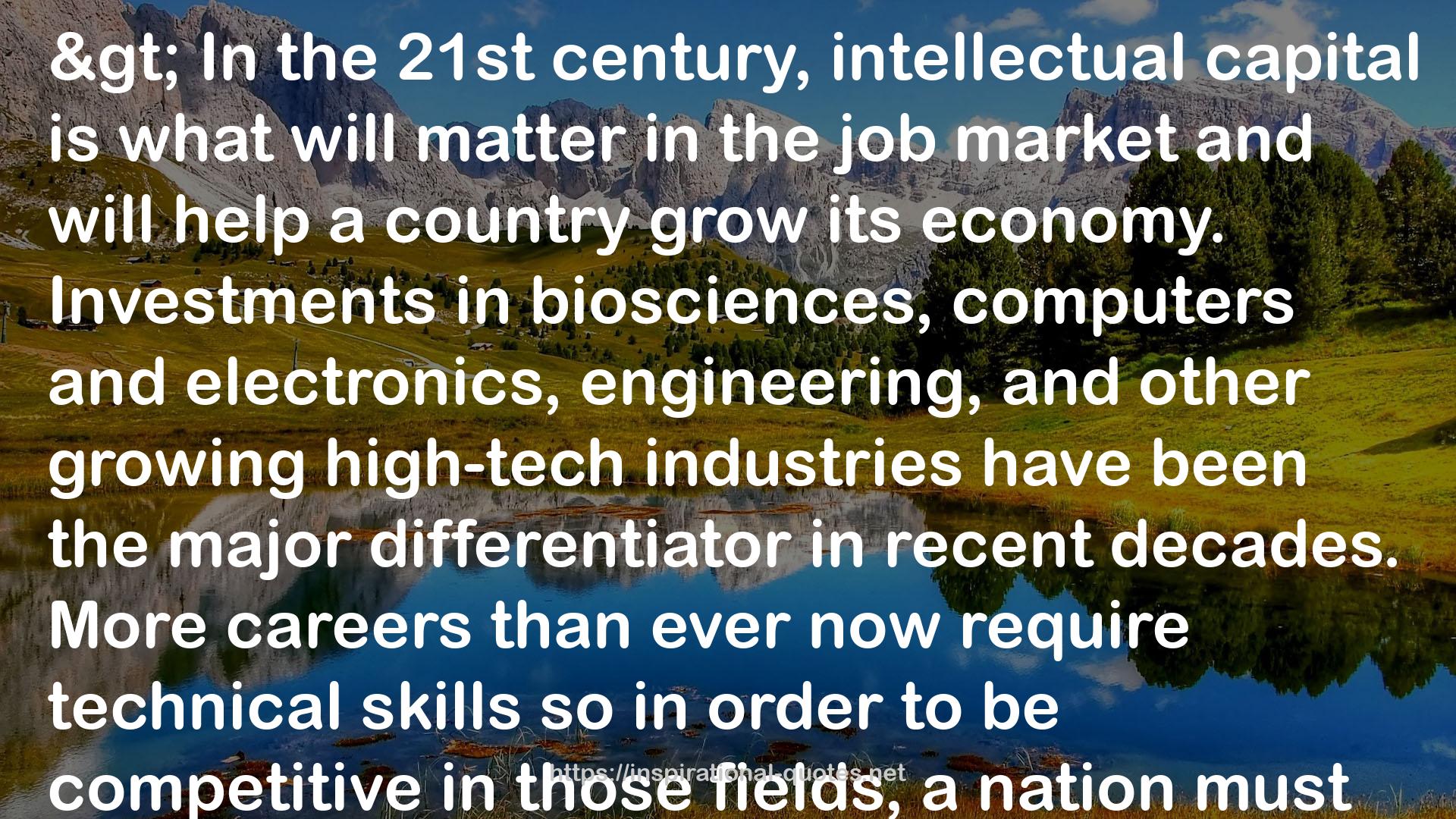" > In the 21st century, intellectual capital is what will matter in the job market and will help a country grow its economy. Investments in biosciences, computers and electronics, engineering, and other growing high-tech industries have been the major differentiator in recent decades. More careers than ever now require technical skills so in order to be competitive in those fields, a nation must invest in STEM studies. Economic growth has slowed and unemployment rates have spiked, making employers much pickier about qualifications to hire. There is now an overabundance of liberal arts majors. A study from Georgetown University lists the five college majors with the highest unemployment rates (crossed against popularity): clinical psychology, 19.5 percent; miscellaneous fine arts, 16.2 percent; U.S. history, 15.1 percent; library science, 15 percent; and (tied for No. 5) military technologies and educational psychology, 10.9 percent each. Unemployment rates for STEM subjects hovered around 0 to 3 percent: astrophysics/astronomy, around 0 percent; geological and geophysics engineering, 0 percent; physical science, 2.5 percent; geosciences, 3.2 percent; and math/computer science, 3.5 percent. "
― Philip G. Zimbardo , The Demise of Guys: Why Boys Are Struggling and What We Can Do About It
